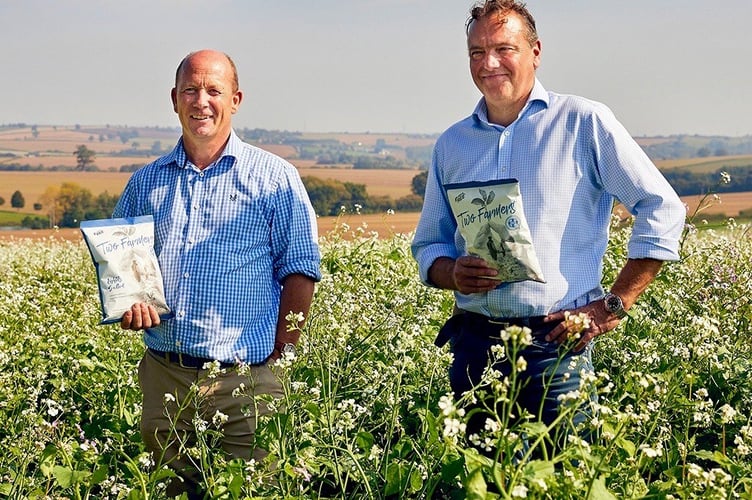A CRISP-making farmer’s bid to cover 69 acres of countryside in polytunnels has been crunched by a planning inspector.
Around 600 protests were lodged with Herefordshire Council when Two Farmers crisp producer Mark Green unveiled several linked schemes to launch a large scale soft fruit-growing operation at former orchards at Llangarron, between Ross and Monmouth.
And after a six-year planning battle, the inspector has now turned down his appeal to develop the Biddlestone Farm site, saying proposed landscaping measures would not “integrate this significant amount of polytunnel development into the landscape”.
Mr Green, of nearby Ditton Farm in St Owen’s Cross, whose eco-friendly crisp business supplies the Glastonbury Festival and who also produces Gun Dog Gin, said he wanted to install ’Spanish polytunnels’ using a raised ‘table-top’ method of ‘grow-bag’ production.
Seven separate planning applications were originally lodged, covering the polytunnels themselves, a new driveway onto the A4137, three “balancing ponds” for water runoff, mobile homes and other facilities for up to 240 seasonal workers, a farm building, pump house and loading dock.
But hundreds of residents and organisations objected to the ‘industrial’ fruit farm bid at the planning stage, including the Campaign to Protect Rural England and Woolhope Naturalists’ Field Club (WNFC), alongside five neighbouring parish councils.
A Herefordshire Council planning report said objectors claimed it was of “industrial proportions” and would be “highly visible from many miles away”.
Concerns were also raised that it was next to the A4137, “which is number four in the top 10 of Britain’s most dangerous roads”, including the accident blackspot at St Owens Cross.
David Whitehead of WNFC said the mass production of strawberries in polytunnels covering up to 12 fields would have a “considerable negative impact” on a large area of the countryside.
“Surely we must be close to saturation point for tunnel-forced strawberries, whereas a diverse and well-managed orchard has value to the community,” he claimed.
Herefordshire Council refused the scheme on the grounds that it had not shown there would be no harm to the “visual amenity and landscape character” of the area, nor harm to biodiversity.
Nor had it been shown that the proposed water management and drainage would not harm the River Wye special area of conservation (SAC) or increase the risk of flooding locally, nor that the road access would be safe, the council’s planning officer ruled at the time, it ruled.
In a letter of appeal covering all seven of the original applications, the farm then said landscaping mitigation measures it proposed would not only address the visual amenity but also bring biodiversity improvements, and also sought to address the council’s objections on flooding, drainage and road safety.
But following a public hearing last November, the planning inspector appointed to rule on the appeal has now dismissed this.
On the ecology issue, the inspector was unconvinced that the proposed water management and foul drainage systems would not have an adverse impact on the protected river Wye.
A submitted survey of protected great crested newts on the site, which was operated as a commercial orchard by the Oakeley family from 1939, was also ruled out of date and therefore invalid.





Comments
This article has no comments yet. Be the first to leave a comment.